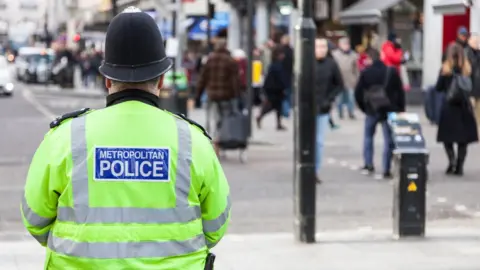Why are sexual offences increasing in Scotland?
The number of sexual offences reported to the police in Scotland has reached its highest level since comparable records began in 1971.
The latest statistics showed that more than 10,800 sexual offences were recorded last year, an increase of 5% since the previous year and 60% more than the 6,552 crimes recorded in 2007/08.
There were just 4,611 reported sexual offences in 1971, and sexual crimes have been on a long-term upward trend since 1974. The numbers have increased in each consecutive year since 2008/09.
But what is behind the rise?

Increased reporting
 PA
PAThe rise in recorded sexual offences is partly due to the increasing number of victims coming forward several years or even decades after the crimes were committed against them.
Of the 4,281 sexual assault offences recorded by police last year, more than a third - 1,705 - were committed before December 2010, when the Sexual Offences (Scotland) Act came into force.
Campaigners believe that the successful outcome of many of these historical cases gives other survivors confidence that they will be listened to and believed by the police, regardless of how long ago the offences happened.
Media coverage may also have led to the identification of further survivors who previously may not have reported crimes to the police.
Similarly, the authorities and campaigners believe that awareness-raising campaigns and changes in social attitudes, as well as changes in the law, mean victims of more recent rapes and sexual assaults are also more likely to contact the police than they had been in the past.
However, even with those advances, sexual offences continue to be under reported - with a study last year suggesting that fewer than one in five people in Scotland who say they have been a victim of rape have reported it to the police.
So the 1,878 rapes and attempted rapes, and 4,281 sexual assaults, recorded by the police last year are likely to be merely the tip of the iceberg.

Internet crime
 Getty Images
Getty ImagesNew technology has led to a sharp increase in the number of "cyber enabled" offences - where the internet is used to commit the crime - in recent years.
Many of these online offences involve the perpetrator sending unwanted explicit messages or images to their victim, often through mobile phones.
Researchers have estimated that online offences were responsible for about half of the growth in all sexual crimes recorded by the police between 2013/14 and 2016/17, and now account for 20% of all recorded sexual crimes.
Three-quarters of victims are under the age of 16, with perpetrators also likely to be teenagers - with more than half aged under 20.
The vast majority of victims are female - and the vast majority of perpetrators male.
Cyber enabled crimes are most likely to be reported by a relative or guardian (38%), followed by the victim themselves (34%).
The police also point to their relative success in identifying people who download or share child abuse images online - with 649 cases recorded in Scotland last year, compared with just 69 in 2009/10.
And online child sexual abuse, which includes grooming and exploitation, has also seen an increase in reporting, not only from victims but concerned members of the public.

Changes in the law
 Getty Images
Getty ImagesThe Sexual Offences (Scotland) Act, which came into force on 1 December 2010, widened the definition of rape - making comparisons with rape and attempted rape statistics before and after that year difficult.
The act also saw crimes such as indecent communication and voyeurism, which had previously often been recorded as breach of the peace, reclassified as sexual offences.

Prostitution crimes
 Getty Images
Getty ImagesCrimes associated with prostitution now account for just 3% of sexual crimes, and have decreased dramatically over the past decade.
However, there was a 23% increase from 247 in 2015/16 to 303 in 2016/17.
The majority of crimes in this category (87%) are recorded in Aberdeen City and Glasgow City.
The number of prostitution-related crimes in both of these council areas has more than halved in the past ten years, but both recorded an increase last year - from 76 to 105 in Aberdeen and from 137 to 158 in Glasgow.

How does Scotland compare to other parts of the UK?
 Getty Images
Getty ImagesRecorded crime in Scotland is not directly comparable with England and Wales or Northern Ireland due to differences in legislation and counting rules.
But there is an upward trend for sexual crimes across the UK.
Between 2015/16 and 2016/17, sexual crimes in England and Wales increased by 14% compared with 5% in Scotland and 4% in Northern Ireland.
In the five years from 2011/12 to 2016/17, sexual crimes in England and Wales increased by 130% compared with 47% in Scotland and 74% in Northern Ireland.
Like their colleagues in Scotland, the authorities in England and Wales believe that the increase in recent years is likely to reflect a greater willingness of victims to come forward to report such crimes.
And they say it may also reflect changes in recording practice rather than actual victimisation.
Officials in Northern Ireland have suggested that the rise there may in part be due to improved recording of sexual offences as a result of clarification from the Home Office in relation to the issue of consent.